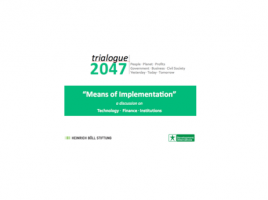Changing Face of Rural Communication
Development is a course of action that marks growth, progress, positive change in the physical, economic, environmental, social and demographic components of a community or region. It also means effective utilisation of local resources by bringing the necessary institutional, structural and attitudinal change of the local population. The idea of development is to make sure that there is rise in quality of life through effective institutional processes and the conception or growth of local and regional income and employment opportunities, without being detrimental to natural resources and social harmony.
Communication is one of the major components and driving force of development. It leads people from instinct to inspiration, through process and system of enquiry, command and control. It creates a common pool of ideas, strengthens the feeling of togetherness through messages and translates them into action.
Without the exchange of ideas or information, no innovation would be able to spread. For natural resource management and improved agriculture practices, communication plays a pivotal role. Communication gaps are direct impediment to development and need to be overcome. This may sound simple and straightforward. In reality, it is one of the hardest challenges that anyone involved in development processes has to face. Information overload is becoming a problem for development professionals.
To be useful, information has to be relevant, reliable, timely and delivered via an appropriate medium. Research has been going on for more than a decade and some promising technologies have been developed for rural communication. Technologies have moved from social labs to the larger community. Efforts are intensifying to disseminate the technologies on large-scale for adoption or adaptation by individuals, with the ultimate objective of improving their livelihoods.
Television, community radio, newspapers are mainstream technologies developed for rural communication and recently their adaptation has increased tremendously across all sections of the rural society. Traditional technologies for rural communication like folk art and folk plays have disadvantages of limited outreach. However, in certain cases they are very effective.
In the present scenario, app-based information dissemination platforms are emerging as crucial assets for resource efficient communication. With time, larger population is getting access to these app-based agriculture information platforms. Many state agencies and government departments have started their respective toll-free helpline numbers for farmers – where farmers can access the real time information about soil health, seeds, market rates etc. These communication platforms for natural resource management and agriculture are resource efficient as they cater for the need of large farmer groups.
Chandan Kumar Mishra
mail@devalt.org
The views expressed in the article are those of the author’s and not necessarily those of Development Alternatives.





Leave a Reply